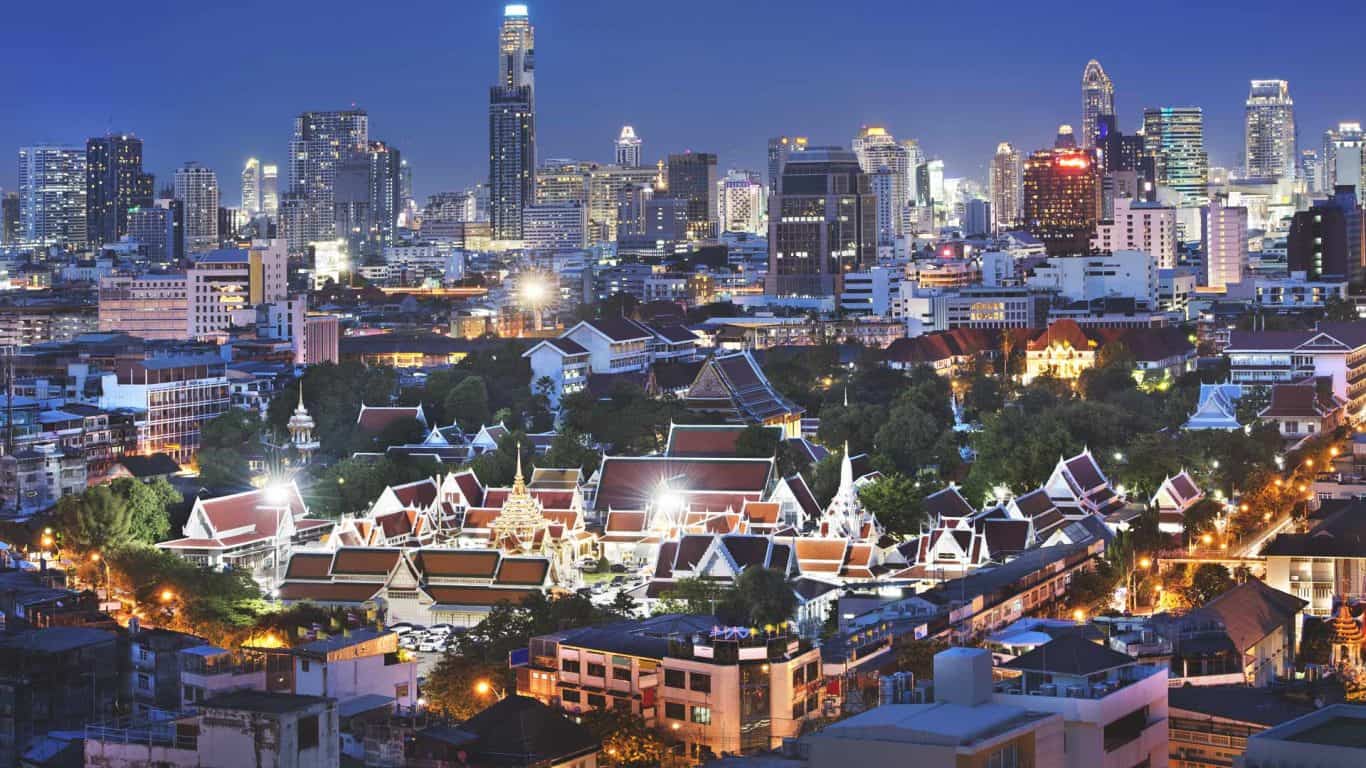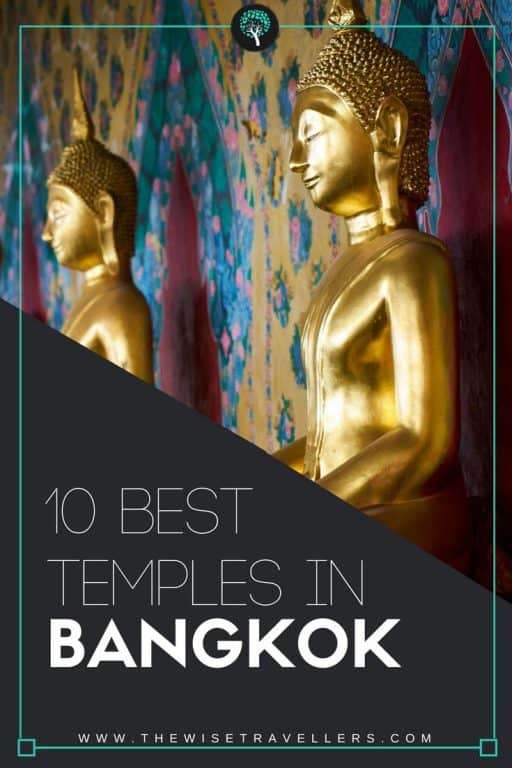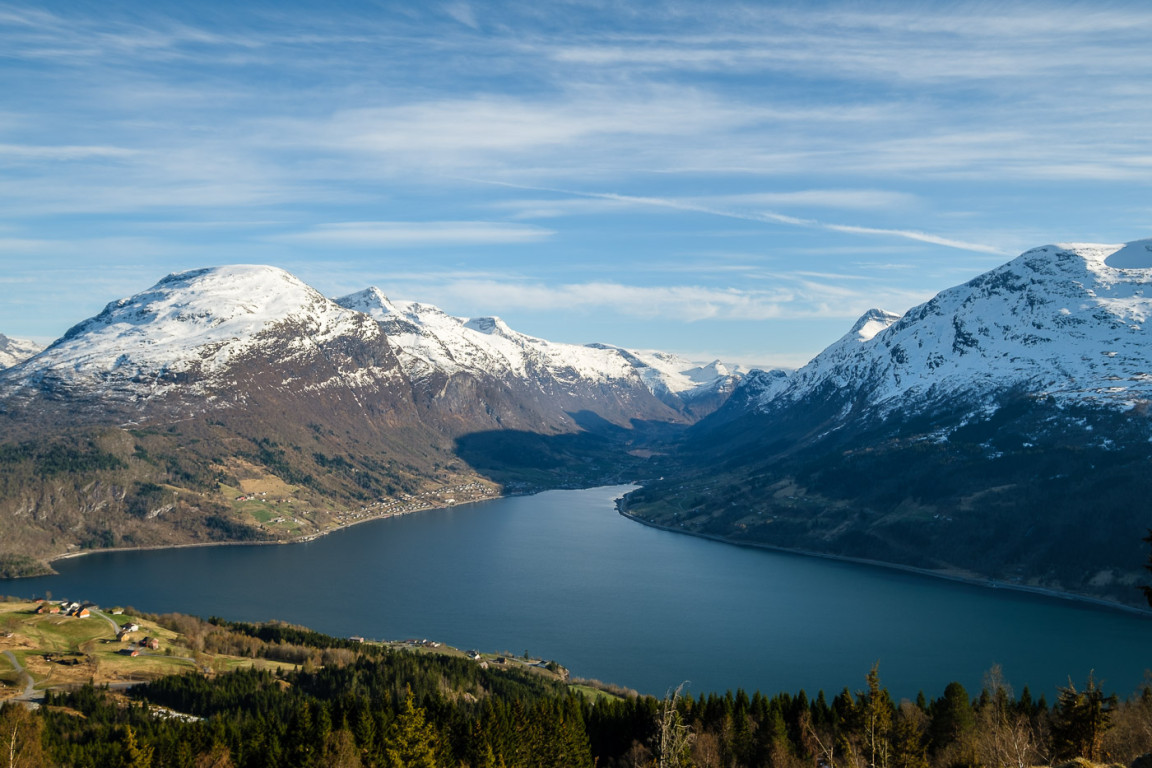In Thai ‘wat’ meaning temple and there are almost 400 temples to see around Bangkok. It’s impossible to see every one of them so, here it’s 10 of the best temples in Bangkok.
A great part of the temples, fortunately, is located near the Grand Palace, perfect for an easy day of exploration. Just remember to not only bring your camera but also to wear long light pants, a t-shirt that covers your shoulders and proper shoes as some temples will not allow flip-flops. Remember to wear a hat or cap because it can get really hot out there and drink lots of water.
Wat Arun
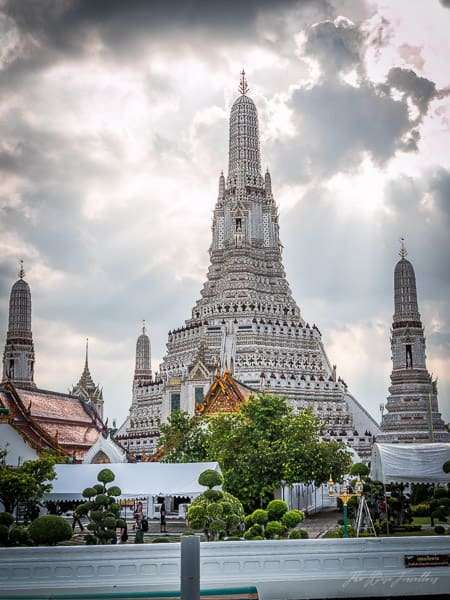
Also known as The Temple of Dawn, consists of five prangs or towers overlooking the Mae Nam Chao Praya. The central prang is a Khmer style tower. The temple is being renovated but, you can climb the stairs of the main tower and prepare to be amazed by the view especially at sunset.
It is said that King Taksin and his royal fleet came upon this temple at dawn and designated the temple as a royal one. This is without a doubt one of the best temples in Bangkok. The decoration with ceramic tiles and colourful pieces of porcelain make it unique.
Entrance fee: 50 baths (1,30€)
Opening hours: 08:00 – 17:30h
Wat Pho
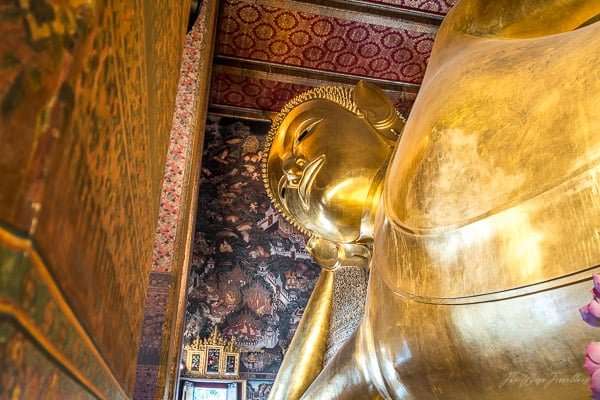
Or temple of the Reclining Buddha is a tourists sights, there are always lots of people there. This temple gained his name from a monastery in India where Buddha is believed to have lived. Wat Pho is one of the oldest and largest temples in Bangkok.
Inside Wat Pho have this impressive Reclining Buddha, measuring 15 meters high and 43 meters long covered with gold leaf and baring four-meter long feet encrusted with exquisite mother-of-pearl (or nacre) decorations.
This temple is located south of the Grand Palace and has one thousand Buddha images and 91 chedis (stupas). Four of them are dedicated to the four Chakri kings.
In Wat Pho, you can enjoy a Thai massage because this temple is the home of the first Thai massage. Here, located in an open-air hall outside the temple is located the Traditional Medical Practitioners Association Center where the Thai massage is taught.
Entrance fee: 100 baths (2,60€)
Opening hours: Daily 08:00-17:00h (Massage available until 18:00)
Wat Saket
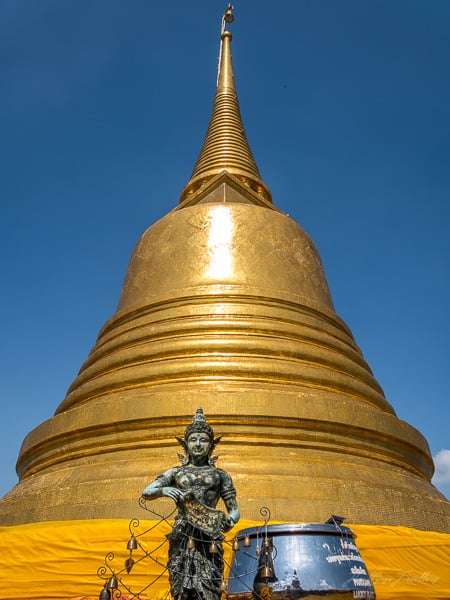
This is the Golden Mountain temple sits on top of an artificial hill where you can have 360 views to Bangkok. Built first by King Rama III (1787-1851) has a long construction history. On the first attempt, the chedi collapsed because of the soft nature of the ground.
Therefore King Rama IV and Rama V make it happen and the golden chedi that you see nowadays were constructed by during their reign. Be aware of the 300 steps that you have to climb to the top but the trees along the path will help. Inside you can find a relic of Buddha brought from India. There are a chapel and a library open to visitors on these historic grounds.
Entrance fee: 20 baths (0,52€)
Opening hours: 09:00 – 17:00h
Wat Traimit
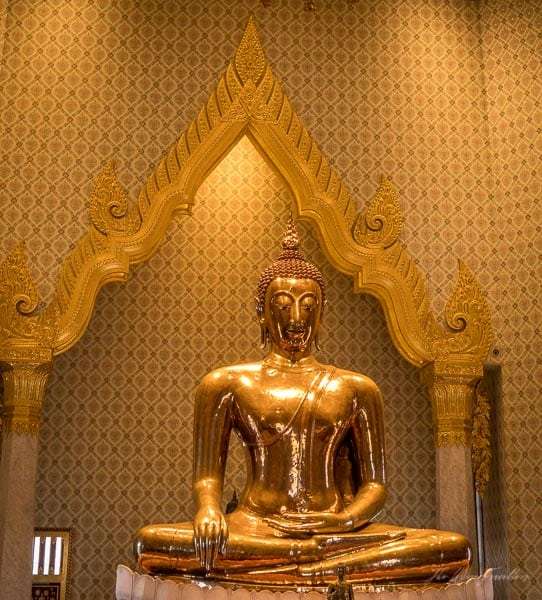
Wat Traimit is an elegant multilevel white and gold temple, located in Chinatown. This temple has the biggest golden Buddha statue in the world, measuring 3 meters in height. The architecture inside is beautiful.
It was made in the 13th-14th centuries but, the gold hidden underneath was only revealed by accident in 1955. At the time this discovery was all over the news because it was very close to the commemoration of the twenty-fifth Buddhist Era (2500 years since Gautama Buddha’s passing). Many Buddhists believe it was something miraculous.
The actual building was inaugurated in 2010 to house the Golden Buddha. You can also visit here the Bangkok Chinatown Heritage Centre and an exhibition on the origin of the Golden Buddha.
Entrance fee: 40 baths (1€)
Opening hours: 09:00 – 17:00h
Wat Suthat
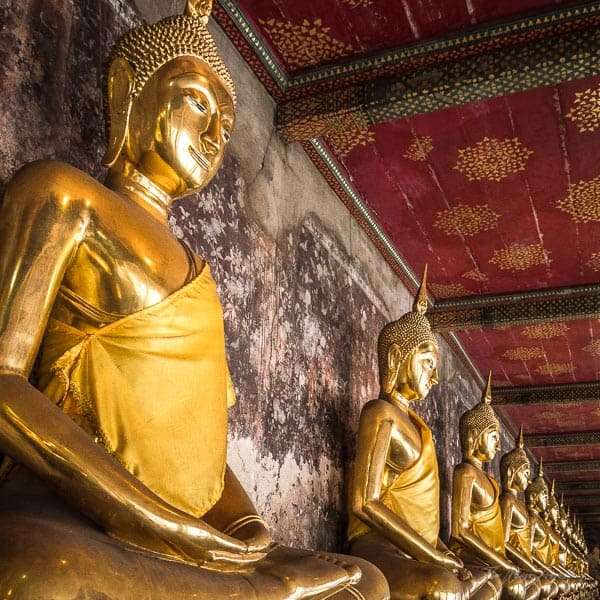
This temple is better known for the red Giant Swing that stands at its entrance. Wat Suthat is one of the oldest and most impressive temples in Bangkok. The temple features an elegant chapel with a sweeping roof, elaborate wall murals, and graceful hand-carved teakwood door panels. It is truly beautiful to see.
It was constructed by King Rama I (1782-1809) to shelter the 13th-century bronze Buddha image transported by boat from Sukhothai but it was only finished during King Rama III’s reign (1824-1851). At the lower terrace of the base, you can see 28 Chinese pagodas which mean the 28 Buddhas born on this earth.
When we visit (October 2017) it has been renovated so there was a lot of working going by. Check before you visited.
Entrance fee: 20 baths (0,52€)
Opening hours: 08:30 – 21:00h
Loha Prasat
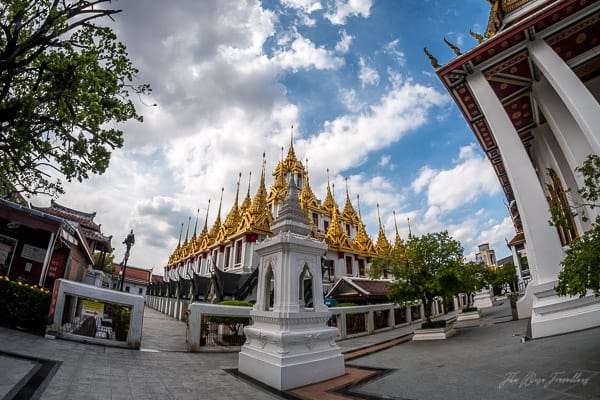
This temple is peculiar and stands out with its unique architectural identity. Also called the ‘Metal Castle’ because of the roof is made of bronze tiles and one of only a few in the world with this type of roof.
It’s composed of five towers, of which the outer, middle and the central tower contain large black iron spires. The temple has 37 black metal spires meaning the 37 virtues that are required to reach enlightenment.
Although the design of these temples appears Burmese, it is in fact, a copy of old Buddhist design found in Sri Lanka. There were only two structures which had existed in the world similar to Loha Prasat, one in India the other in Sri Lanka. Nowadays it is the only one of its kind.
This temple was begun construct by King Rama III in the early nineteenth. When we visited the black iron spires were been replaced by golden iron spires. But the temple still maintains the unique structure as you see in the photo above.
Loha Prasat was submitted to UNESCO to be World Heritage Site in 2005.
Entrance fee: 20 baths (0,52€)
Opening hours: 08:30 – 18:00
Wat Phra Kaew
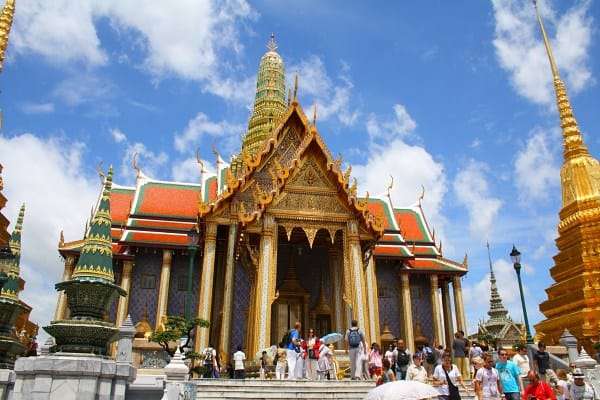
Better known as the Temple of Emerald Buddha one of the most important and best temples in Bangkok. The temple is located on the ground of the Grand Palace. The Emerald Buddha inside it’s iconic carved into a 66 cm tall block of Jade. It was first taken to Laos before coming to Chiang Mai and finally making a permanent home in Bangkok, where it’s today.
At the entrance, you can find a pair of yakshis (mythical giants). Inside the complex, you will have a 2 km long gallery covered with incredibly detailed mural paintings depicting 178 scenes of the epic story of Ramayana. The murals serve to emphasise human values of devotion, faith, and honesty. These murals went for renovation regularly.
Inside the complex of Wat Phra Kaew, you can find a model of Angkor Wat, built when Cambodia was under Siamese control, a library known as the “Phra Mondop”.
There is also a hermit bronze statue, where the black stone, many believe to have healing powers. On the eastern side of the temple, you can see eight prangs (towers) each of different colours. Statues of elephants can be found around the complex, symbol of independence and power.
When we visit Bangkok we can’t enter Wat Phra Kaew (October 2017) and also the Grand Palace due to the royal cremation. Only Thais wore allowed and dressed properly to pay respects to the late king.
Entrance fee: The Grand Palace ticket can be used to visit the temple, there is no separate entrance fee for the Wat Phra Kaew
Opening hours: 08:30 – 15:30
Wat Benjamabhopit
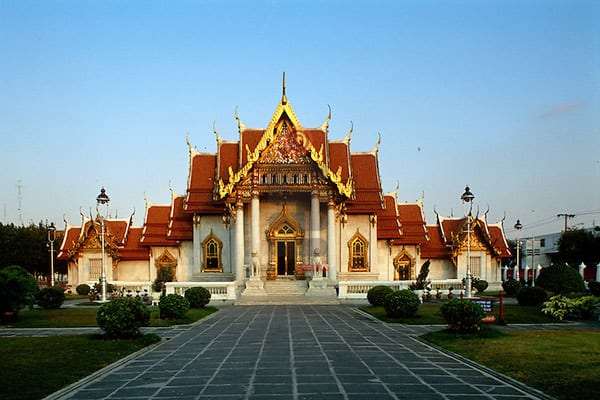
This temple named the Marble Temple because of the external walls is covered with marble imported from the Carrara region in Italy. The temple it’s being embossed on the back of 5 baths coins.
The ordination hall (know as ubosot) of the marble temple was designed by Prince Narisara Nuvativongse, half-brother of King Chulalongkorn.
At the entrance, you will be granted four impressive marble pillars. The large courtyard is made of shiny white marble elegant chofahs (shaped like a slender bird, represent Garuda) at the top end of the roof and the beautiful gold carvings make it unique.
At sunlight, the white marble and the golden decorated windows give the ordination hall a delightful appearance. There is a stone lion (chinthe) on the other side of the temple, Thais believe this creature is the guardian of Buddhist temples.
There is a Bodhi tree, that was brought over from Bodhgaya in India, where the Buddha reached enlightenment just behind the ordination hall.
There is a Sukhothai-style Buddha statue named Phra Buddhajinaraja, made in 1920 after the original located in Wat Mahathat in Phitsanulok, you can find it inside the ordination hall. Beneath this statue lay the ashes of King Chulalongkorn.
In 2005, the temple was submitted to UNESCO for consideration as a future World Heritage Site. During our time in Bangkok, we can’t visit because of the royal cremation.
Entrance fee: 20 baths (0,52€)
Opening hours: 08:00 – 17:00
Wat Prayoon
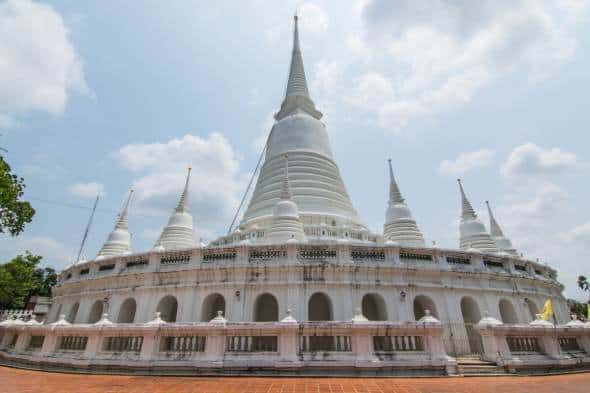
Wat Prayoon, also called Wat Rua Lek, sits on the western side of the Chao Praya river bank. Located on the Thonburi side, this area is on the southern edge of the old Portuguese community (Kuthi Jeen). If you are heading to this temple, you can also explore the old Portuguese community and go to one of Bangkok’s first Catholic churches (Santa Cruz) in the area.
Built during King Rama III’s reign, the temple’s outstanding features include a large inverted bell-shaped chedi (pagoda), turtle ‘mountain’ housing spirit houses and an artificial lake. Features typical structures such as an ordination hall, assembly hall, meditation hall, chedi and library.
The bell-shaped chedi (Phra Boromthat Maha Chedi or Great Chedi) sits on an 80-metre base, surrounded by a porch and 18 satellite chedis. It is quite an impressive sight, due to its size, height, and architectural features. During 2006 chedi restoration some Buddha images, amulets and artefacts were found underneath. Today they are exposed is the museum next to the Great Chedi.
Turtle Mountain is another highlight at Wat Prayoon. Modelled after a mound of melted candle wax, this low-rise mount has several spirit houses dedicated to the deceased. These miniature houses are quite elaborate, showcasing a mix of Eastern and Western architectural styles. The mount is surrounded by an artificial lake; it’s a pleasant area to take a rest and feed the turtles.
If you want to have a true experience of what Thai culture is, go to this temple. There aren’t many tourists around which can be good. In 2013 Wat Prayoon was awarded UNESCO Asia-Pacific Award for Cultural Heritage Conservation.
Entrance fee: Free admission
Opening hours: 06:00 – 17:30
Wat Mahatat
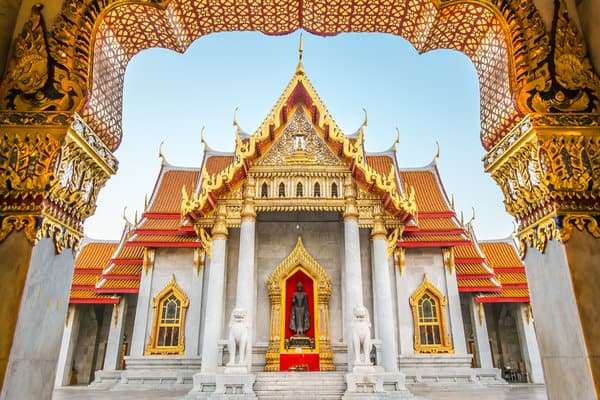
Wat Mahatat or more precisely ‘Wat Mahathat Yuwarajarangsarit Rajaworamahavihara’ was built during the Ayutthaya period. It is one of the temples in Bangkok, used for royal ceremonies thanks to its strategic location between the Grand Palace and the Royal Palace. Located within the temple grounds is the oldest higher education institute for Buddhist monks in Thailand and an important centre for the study of Buddhism and meditation.
The temple is one of the oldest temples in Bangkok, it was originally built to house a relic of the Buddha. You can also have your fortune told inside the ‘wat’ (temple). Inside you will find one of the biggest ordination hall in Thailand with is gold plated Buddha image. This temple is one of the busiest temples in Bangkok.
Every Sunday, near to the temple, there is the Bangkok’s largest amulet market, where religious amulets, charms, talismans, and traditional medicine are exposed on the ground to be inspected by buyers looking for one that will bring good luck or ward off evil. There are a variety of amulets, used for specific purposes; to bring money, restore health, deal with unrequited love or keep your enemies away.
Entrance fee: Free admission, a small donation is highly appreciated.
Opening hours: 09:00 – 17:00
Discover the best temples in Bangkok
As you know it’s practically impossible to visit every temple in Bangkok. For us, these are the 10 best temples in Bangkok but, you may consider others. The import thing to retain when travel to Bangkok and want to visit the temples is to select some of them in advance.
Do some research, plan the itinerary and also choose accordingly to your budget as some of them it isn’t for free. Keep in mind that some of these temples are very tourists sight so it better to go early in the morning or later in the afternoon to avoid the crowd, visit Bangkok.com to know more about the opening hours.
Bangkok is a big busy city so you do want to get caught in traffic, see different options to get to the temples. Once get there, enjoy the temple because it’s unique.
